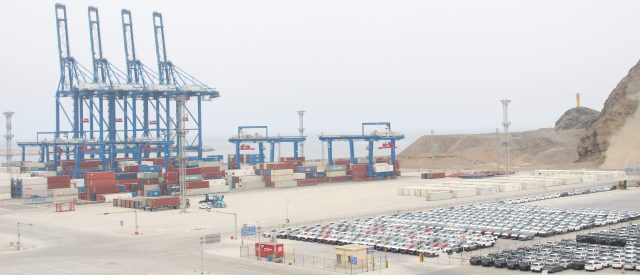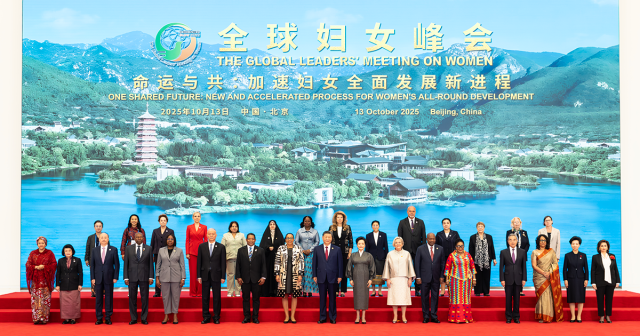Interview with Cynthia Sanborn in Chilean newspaper La Tercera
Por: Diario La Tercera de Chile | 14 July, 2023

On June 24, 2023, Cynthia Sanborn, a professor and researcher at the Center, took part in an interview with the Chilean newspaper La Tercera. Among other things, Dr. Sanborn commented on Peru’s relationship and trade agreements with China.
DOES IT LEAVE CHILE OFFSIDE? PERU’S FRUITFUL OFFENSIVE TO OPEN UP TO ASIA-PACIFIC
In 2024, for the third time, Peru will host the summit of the Asia-Pacific Economic Cooperation (APEC) forum. On this occasion, the country intends to showcase the fruits of its long-standing strategy to position itself in this key region, as well as its ongoing partnership objectives. A central plank of this strategy is already in sight: 80 kilometers north of Lima, China is building Chancay Port, the largest as well as the Asian giant’s first megaport in the region, and one among many of the investments that Beijing has made in each of Peru’s 24 departments. Just as pivotal to Peru’s strategy are the free trade agreements it has in place with several other economies in the Asia-Pacific region.
Relations between Lima and Asia-Pacific region have an important historical component: Peru attracted the second-largest Japanese diaspora in Latin America after Brazil. But also, in the late 19th century, it received sizeable numbers of Chinese migrants. And as far as economic and commercial ties are concerned, Peruvian business actors have had their sights set on Asia-Pacific since the 1980s—and the country solidified this interest in 1998 when it joined APEC, four years after Chile.
It was during the government of Alejandro Toledo (2001–2006) that Peru’s current strategy for the Asia-Pacific region emerged and the possibility of free trade agreements with different countries began to be taken seriously. At that time, this region—alongside the United States— was one of the most important objectives for the Peruvian Foreign Ministry (informally known as Torre Tagle, after its headquarters). Today, Peru has free trade agreements with China, Singapore, Thailand, South Korea, and Japan.
“Since the 2000s, each government—despite their differences—has placed a lot of emphasis on achieving different trade agreements, on getting involved as an Asia-Pacific country. I would say the emphasis has been on trade opportunities and then on direct investment from Asian countries.
We also have investment from Japan, Korea, even from India and, of course, China. This has been a constant line [of approach] for our various foreign ministries,” Cynthia Sanborn, a researcher at the Center for China and Asia-Pacific Studies (CECHAP) and Universidad del Pacífico in Lima, told La Tercera. “Opening ourselves up to Asia-Pacific continues to be a consensual policy among almost all political tendencies, and especially, among economic and social leaders, and among the public. There is not a high level of prejudice or xenophobia against Asia here as there can be in some other countries,” she added. “Peru has an advantage by having a more diversified export portfolio than Chile, including a greater variety of minerals, as well as other non-traditional products. We also have the advantage of deep and historical relationships with migrants from China, and from Japan— communities that have strengthened their family and cultural ties. ”
Experts from Lima agree that Peru’s host status for next year’s APEC summit—only the USA has held the event three times—is a reflection of the Peruvian strategy to consolidate itself as a platform for Asia-Pacific in the region. “Peru’s relations with China and other Asia-Pacific countries have been state policies for more than half a century, which thankfully have been sustained despite the current political instability,” said Sanborn. For the internationalist Francisco Belaúnde, the credit is due to Torre Tagle. “It is a Foreign Ministry that is part of the islands of excellence within the Peruvian State, which also include the Ministry of Economy and Finance. They are professionals.”
RELATIONS WITH CHINA
Over the past few decades, Beijing has deployed its influence in Latin America using trade and investment as its spearheads. In this way, Peru has become one of its most important partners in the region. According to the Lima newspaper El Comercio, Beijing’s first global venture took place in Peru, in the mining and port city of Marcona, in 1992. At that time, the South American country was disregarded by the international community given the economic debacle inherited from the government of Alan García (1985-1990). According to El Comercio, Peru “was the ‘laboratory’ where China developed its first overseas business incursion to test, through a series of trials and errors, what would later be an astonishing international expansion.”
According Francisco Belaúnde, at that time “Chinese investments also began to arrive and there was also an FTA. It’s an important relationship, sort of a strategic partnership, a special thing with China. Peru clearly takes this as a goal of its trade policy. Since then, Peru’s strategy has been gaining ground and it is currently one of the largest recipients of Chinese investment in Latin America, at US$30 billion—bettered only by Brazil. Chile ranks fifth on this list. Conversely, China is Peru’s main trading partner, with exports totaling US$ 20.7911 million.
CECHAP has identified and validated the existence of 153 active Chinese companies in Peru, which operate in 11 economic sectors across all regions of the country, as El Comercio has reported. These are predominantly investments in mining, energy, technology, as well as public construction works, in which the largest number of Chinese companies operate. One such project is Chancay Port, the first to be established in the region by Chinese state-owned shipping company Cosco Shipping. With an investment of more than US$ 3,000 million, this project is expected to process a large proportion of the continent’s maritime trade. The port, which is planned to be operational in the second half of 2024, should have a huge impact on the Peruvian economy, meeting the growth in port demand.
In Chile, some are watching the construction of this colossus with concern, fearing that it will overshadow ports such as San Antonio. With the Chinese state owning a 60% stake, the Chancay Multipurpose Port Terminal seeks to become a regional logistics center. “It is a project that has been long awaited by Peruvian businesses. The company originally in charge, Volcan, is Peruvian and the workers who are building the port are mostly Peruvian, as are the service providers. They have obtained a very important Chinese partner, Cosco Shipping, which gave this project much larger scope and turned it into a megaport, and as such, a ‘hub’ for trade relations with China and the rest of Asia-Pacific,” explained Sanborn. Of course, the project has not been without controversy. In May of this year, a section on the Panamericana Norte highway, at kilometer 80, collapsed following the construction of the Chancay megaport tunnel beneath it, affecting 18 homes. In this regard, experts are quick to point out that there is concern about the “made in China” standards.
Read the full interview in La Tercera here: https://www.latercera.com/la-tercera-sabado/noticia/deja-offside-a-chile-la-fructifera-ofensiva-de-peru-para-abrirse-a-asia-pacifico/U7JGCRNXHJGFZFGXTXU4DREYF4/
View more
